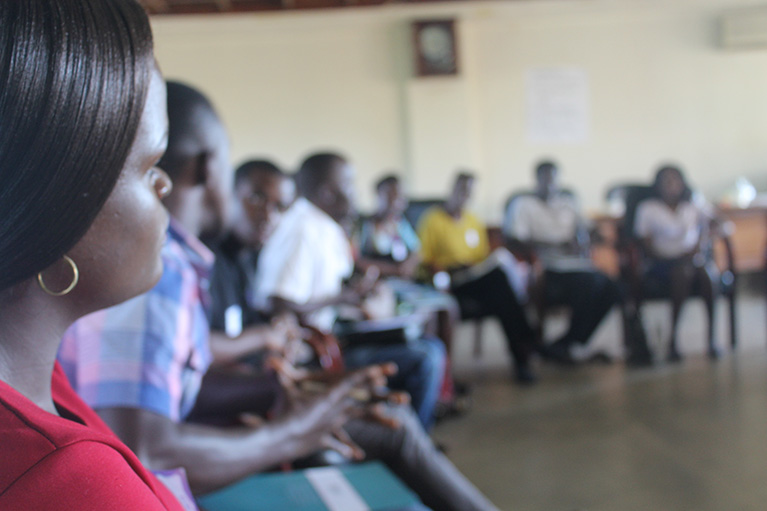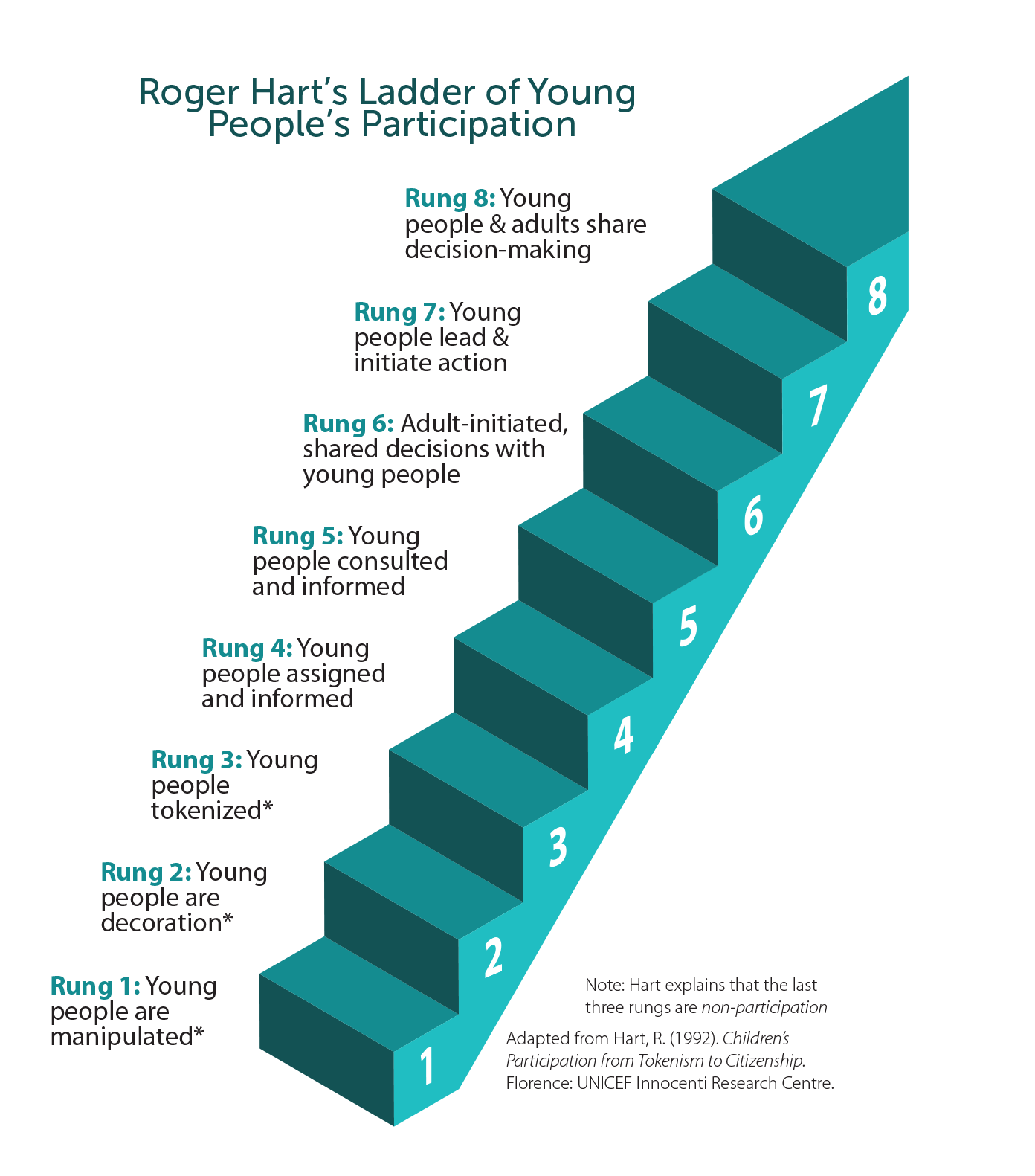What we learned from piloting a youth-led labor market assessment in Uganda

We recently published a guide to facilitating youth-led labor market assessments. The guide draws on our experience with piloting this type of assessment in Uganda. We’d like to share what we learned about creating a mutually beneficial engagement with youth, designing the research process with the end in mind, selecting the right partners, and helping youth use the experience to improve their job prospects.
When young people play a leading role in conducting labor market assessments, the research and the youth can both benefit from the process:
- The research benefits from drawing on the lived experiences and needs of youth—from defining the focus of the research to obtaining candid information from their peers to analyzing and disseminating the results. In contrast, traditional adult-driven research does not benefit from this type of youth lens.
- The youth who lead the research gain leadership skills, soft skills, and research skills that improve their job prospects and promote an inclusive perspective in their lives.
We applied participatory research methods and gender and social inclusion approaches to pilot a youth-led labor market assessment in Kamapala, Uganda, in collaboration with Makerere University. The pilot engaged 18 young people between the ages of 17 and 29 from diverse cultural and educational backgrounds. With our training and support, these youth researchers investigated labor market needs and opportunities that mattered to them. They made key decisions throughout the research process while gaining knowledge of the local labor market and exposure to employers.
Interviews with the youth researchers and the implementing team surfaced the following lessons that have been incorporated in the guide to facilitating youth-led labor market assessments.
Working with youth
Youth can successfully lead or participate in this type of assessment at any stage of the process.
 This is especially true when they are guided by experts on the implementing team. The level of youth participation in the pilot was high throughout the process but ranged from adult-initiated with shared decision-making with youth (e.g., analysis and report writing) to entirely youth-led with adults as equal partners in decision-making (e.g., drafting research questions).
This is especially true when they are guided by experts on the implementing team. The level of youth participation in the pilot was high throughout the process but ranged from adult-initiated with shared decision-making with youth (e.g., analysis and report writing) to entirely youth-led with adults as equal partners in decision-making (e.g., drafting research questions).
These levels of participation correspond to rungs 6 and 7 of Roger Hart’s Ladder of Young People’s Participation respectively.
Recommendation: Assess youth capacity to lead in a youth-led labor market assessment and ensure that adequate expert support is provided for them to succeed.
Having youth in leading roles when conducting the labor market assessment does not significantly lower rigor.
This was because (1) some youth researchers had previous experience with research, (2) the preparation training covered many critical components of doing research, (3) the research support team held youth researchers accountable for their contribution, and (4) the research support team guided the youth researchers in analysis and took on some analysis when necessary.
Furthermore, the youth involvement added additional benefits to the process: the research was more relevant for young people, with the youth researchers investigating problems they cared about, and it was easier to engage other youth (with over 200 youth surveyed).
The use of mobile technology by youth allowed remote monitoring of survey locations as well as how long surveys took. This enabled the team to eliminate poor or unreliable data or to follow up with data collectors about concerns.
Recommendation: Determine the level of rigor desired for the research, then consider how that level of rigor can be attained without forgoing youth involvement and leadership for relevant research.
When youth do not have the time to devote to the research, their participation and the quality of work suffers.
It was hard for participants to get away from their internships or classes to attend the research training.
While overall attrition among youth participants was low, fewer youth may have dropped out if we had reduced the length of the workshops or the timeline of the overall research process. The intervention could have been shortened if we had reduced the scope of the research and therefore the timeline for implementing it.
For instance, the mixed methods data collection (surveying, focus groups, and key informant interviews) was very time-consuming, especially given that youth had other obligations. A reduced research scope would have mitigated the risk of delays in data collection and perhaps resulted in fewer youth dropping out before the project’s completion.
Likewise, a reduced scope with fewer research questions would have allowed for a smaller, more targeted sample and likely would have resulted in more meaningful conclusions.
However, while the variety of data collection methods used required a high investment in training and longer time, the benefits to youth in terms of learning was significant.
Recommendation: Take the time to understand youth researchers’ availability and develop a scope aligned with it. Youth have many demands on their time, which constrains their participation (e.g., work, school, family life).
Designing the research process
Decisions regarding the research design in the early phases of the process affect the research outcome.
One of the decisions made when designing the pilot was to provide youth researchers with literature on youth employment in Uganda rather than conducting a formal literature review. This was decided because of the limited time the implementing team allotted to getting ready for the labor market assessment.
Not doing a formal literature review made it difficult to steer the research to very specific and targeted research questions that filled gaps in other research.
With more time in the getting ready stage, the implementing team would have done a formal literature review. They would have then provided the review to youth researchers to draft research questions with a more specific and targeted focus on gaps in youth unemployment in Uganda. However, note that a literature review can also steer researchers in predetermined directions, so it is important to factor that consideration into design.
Recommendation: Understand the implications of research design decisions on the process and final research outcome.
The gender and social inclusion component of training is critical.
Whether diverse identity groups exist within the group of youth researchers or not, a gender and social inclusion lens is important for youth research, both for working on the assessment and for engaging with one another.
For example, during the pilot, one youth researcher reflected, “I was quite uncomfortable at the beginning of the training. However, as time went on, I noticed that everyone was accommodating me regardless of my identity.”
Therefore, creating a safe environment by establishing a culture of tolerance among youth researchers is important for their collaboration and success, as well as for the way in which they approach research.
By emphasizing diversity and inclusion in the training, youth were able to apply it when working with research questions, data collection instruments, and research respondents. For example, a focus group was planned for hearing-impaired youth, an idea that was initiated by youth researchers.
Recommendation: Learn about the gender and social inclusion challenges and constraints in the location of the intervention and incorporate learning and reflection on the topic and its relevance to research in trainings.
During the data collection stage, youth can benefit from high levels of mentorship and support.
During the pilot, youth were not accompanied during focus groups and interviews. While this provided a high level of participation and leadership for their growth and development, some observation of them during data collection could have helped youth strengthen their skills if the implementing team was present to provide feedback while they were in the field.
While this type of support was not possible due to budget constraints, it can help youth feel confident about their skills and receive feedback immediately that they can apply.
Recommendation: Youth-led labor market assessments should consider how accompanying youth for some parts of their data collection experience can help them succeed.
Choosing partners
Taking time to select the right local partner benefits youth and the research.
Partnering with local institutions to support the youth-led labor market assessment was helpful for gaining insight on the local context, connecting with employers, and accessing training venues and equipment (including computers and software).
While there were opportunities for both IREX and local partners to gain from the research, the partner was volunteering their time, and research activities sometimes fell outside of their day-to-day responsibilities. This led to the local partner being overextended and sometimes unable to provide consistent support.
Recommendations:
- Assess motivation and set expectations. Clarifying why an institution seeks to partner on the intervention helps with defining roles and expectations and ultimately with ensuring that the partnership is mutually beneficial.
- Plan enough time for selecting the partners. Finding the right partners can be time consuming, especially if you are working in a location where you do not have strong networks. Ideally, planning should be done in collaboration with the partner, so it’s best to hold off on detailed planning until you’ve identified a strong partner.
- Create shared accountability. Create an evaluation plan for all partners to evaluate their own performance as well as each other’s.
- Work with more than one partner. Engage with multiple local partners or individuals in the event that one or more become unavailable.
- Compensation. Provide an honorarium or compensation for the support.
Leveraging the experience
In addition to research and soft-skills development and improved knowledge of the labor market, many positive unanticipated outcomes emerged from the YLMA process.
- Network development. In addition to deepening their understanding of the labor market and developing their research and soft-skills, youth substantially grew their professional networks as a result of their participation in the study. For instance, through the process, one of the participants was offered a job; another was asked to submit their resume for a potential job; another developed a network that refers customers to him for research related contracts; and another engaged other youth researchers in developing and submitting a research proposal for a short-term job. The network that these youth researchers gained through the YLMA contributed to links to employment opportunities.
- Gaining credibility. Some of the youth researchers said that their role in leading the research drastically improved their credibility because they were able to use the findings to demonstrate knowledge of the labor market as well as show that they contributed to the work. One youth researcher referenced the assessment at an International Labour Organization conference outside Uganda and another at a workshop he helped set up in Uganda.
Recommendation: In order to capture and demonstrate the full impact of the intervention, future youth-led labor market assessments should include network development and perception of credibility in evaluations.